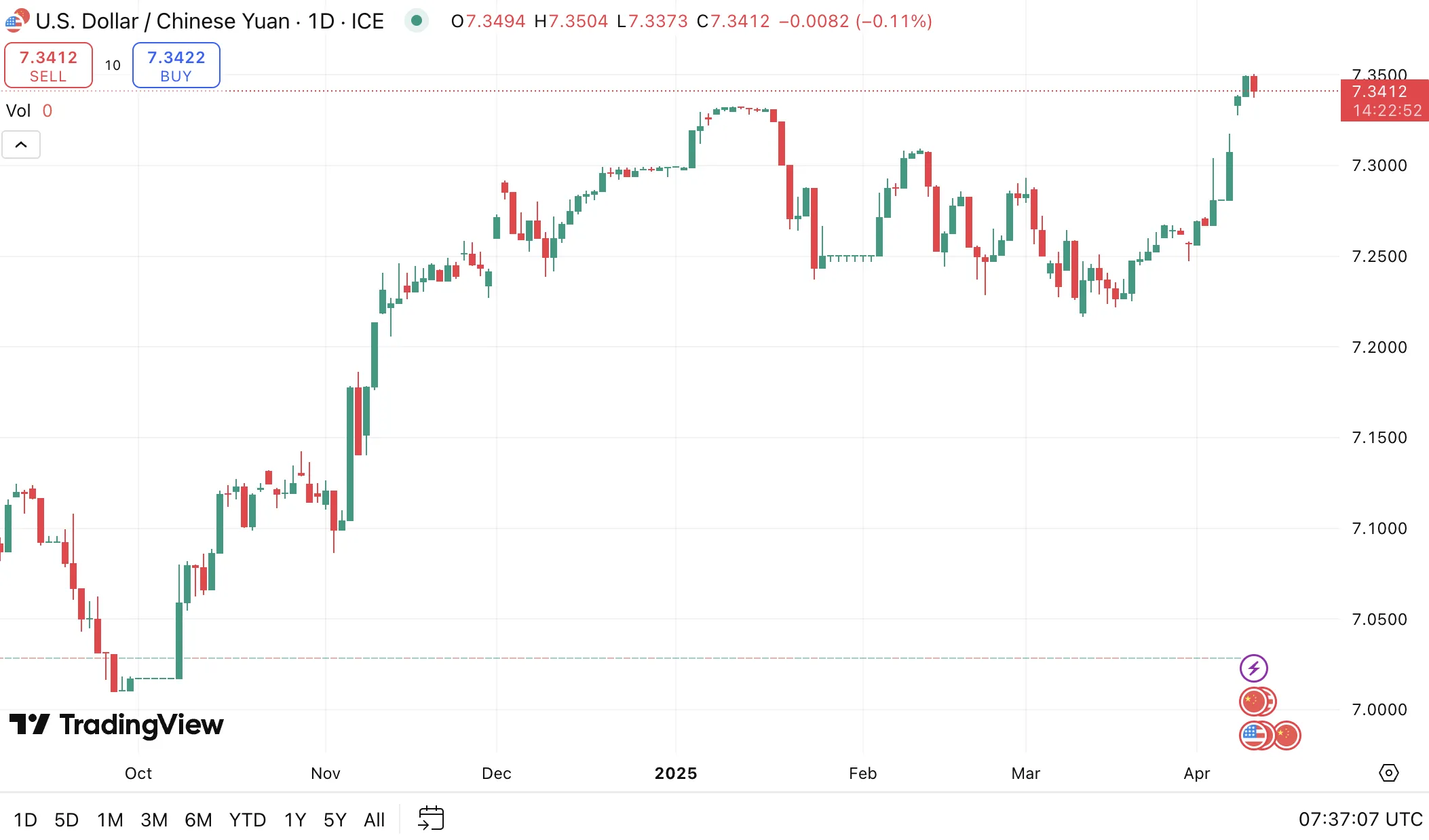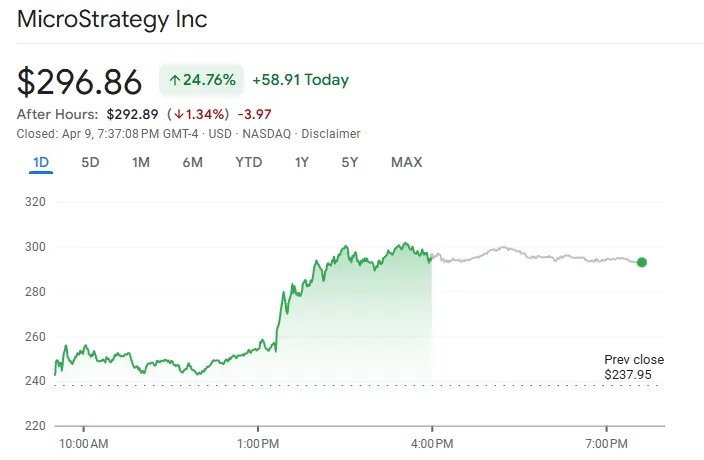Bitcoin
$210 Million Gain in Q1 2024

Core Scientific, a Texas-based Bitcoin mining company, has announced impressive gains in both revenue and profitability for the first quarter of 2024. It reported a revenue of $150 million from digital asset mining, marking a 46% increase in its gross margin.
The company’s success results from strategic efficiency and is a part of the broader cryptocurrency market’s recovery.
Core Scientific’s Financial Strategy Post-Bankruptcy
In this quarter, Core Scientific achieved a net income of $210.7 million. This figure starkly contrasts with its performance in the first quarter of 2023, which reported a net loss of $400,000. The improvement was largely due to a gain of $143.8 million from the extinguishment of pre-emergence obligations.
The company also reported adjusted earnings before interest, taxes, depreciation, and amortization (EBITDA) of $88 million. Moreover, Core Scientific ended the quarter with $98.1 million in cash and cash equivalents.
Core Scientific showed financial resilience by retiring $19 million in obligations. Payments due for the year on miners have been completed. These steps are essential for its operational expansion.
Read more: How Much Electricity Does Bitcoin Mining Use?
The company increased its operating income to $55.2 million, up from $7.6 million the previous year. Its total revenue rose to $179.3 million, a $58.6 million increase from the first quarter of 2023.
Meanwhile, digital asset mining contributed $150.0 million. Additionally, its mining prowess was showcased by the 2,825 Bitcoin (BTC) mined during the period. These were due to a significant increase in Bitcoin prices and improved mining efficiency.
Hosting revenue also showed healthy growth, generating $29.3 million. Both hosting and mining segments benefited from strategic cost management and efficiency gains. However, hosting revenue enjoyed a higher margin due to new client onboarding and efficient cost controls.
Core Scientific’s first quarter performance also includes operational enhancements. The company increased its hash rate and deployed new mining equipment.
It also expanded its hosting capabilities by adding 16 mega-watts of infrastructure. This was to service a high-performance computing customer ahead of schedule.
In his commentary on the results, Adam Sullivan, CEO of Core Scientific, highlighted the strategic moves underpinning these robust figures.
“We delivered outstanding results in the first quarter, […] strengthening our balance sheet by paying down debt and improving our cash position, and improving our fleet efficiency with the deployment of new generation miners,” he stated.
Following the report, Core Scientific (CORZ) stock surged during after-hours trading. It went from $3.42 at 16.38 ET to $3.75 at 17.59 ET.
Read more: 5 Best Platforms To Buy Bitcoin Mining Stocks in 2024

Core Scientific’s achievements this quarter are notable, given its Chapter 11 bankruptcy filing in late 2022. BeInCrypto previously reported that Core Scientific regained its footing in January 2024 after the bankruptcy court approved its resolution plans.
As Core Scientific looks ahead, the strategic focus appears to be on sustaining this growth trajectory while expanding its operational scope. However, it is important to note that the post-Bitcoin halving effect presents a significant challenge.
The Bitcoin halving will reduce miner rewards. At the same time, mining costs will rise. Therefore, this condition will be crucial in determining Core Scientific’s ability to maintain impressive performance in a potentially tougher market environment.
Disclaimer
In adherence to the Trust Project guidelines, BeInCrypto is committed to unbiased, transparent reporting. This news article aims to provide accurate, timely information. However, readers are advised to verify facts independently and consult with a professional before making any decisions based on this content. Please note that our Terms and Conditions, Privacy Policy, and Disclaimers have been updated.
Bitcoin
Florida Bitcoin Reserve Bill Passes House With Zero Votes Against

Florida’s Insurance and Banking Subcommittee unanimously passed a bill supporting a state-level Bitcoin Reserve. It will now head to the legislature. This is the first state Bitcoin reserve bill to pass the House committee with zero votes against it.
Although most of the initial comments were highly skeptical due to recent market chaos and fiscal conservatism, state sponsor Webster Barnaby and other supporters won them over.
Florida Advances in the State Race for a Bitcoin Reserve
Over the last few months, a spate of Bitcoin Reserve bills has swept through US state legislatures. Although these initiatives have seen setbacks due to funding concerns, they have also had noteworthy successes.
Today, the US crypto industry can count on another win, as Florida’s Insurance and Banking Subcommittee unanimously voted to approve a Bitcoin Reserve:
“Bitcoin Strategic Bill Passes House Committee unanimously. Today’s remarks was a historical moment, and I am proud to have been a part of it with Samuel Armes and Florida. Bitcoin is the PEOPLES currency,” claimed Joshua Jake, who spoke in favor of the initiative.
Florida’s Bitcoin Reserve bill also marks a new milestone, even if it’s only a Subcommittee vote. This bill passed with complete bipartisan support, without a single Democrat siding against the bill.
One of the Representatives either abstained or was absent, but everyone present was swayed by the argument.
The bill proposes that the Flordia state government invest $1.5 billion in public funds to build a strategic BTC reserve.
Although the Subcommittee hearing was initially skeptical, partially due to recent tariff-imposed chaos, sponsor Webster Barnaby maintained an impassioned defense.
By the end, he and the Bitcoin Reserve bill’s other supporters had wholly won over this Florida Subcommittee. From here, it will head to the legislature.
Over 30 states have proposed reserve bills so far. Arizona is currently leading the race, with both of its Bitcoin bills reaching the final stage and waiting for a decision from the Senate.

Meanwhile, similar bills have already failed in five states, including Montana and Wyoming. The fact that Florida’s House Committee showed unanimous support could provide the state with an edge in this race.
Disclaimer
In adherence to the Trust Project guidelines, BeInCrypto is committed to unbiased, transparent reporting. This news article aims to provide accurate, timely information. However, readers are advised to verify facts independently and consult with a professional before making any decisions based on this content. Please note that our Terms and Conditions, Privacy Policy, and Disclaimers have been updated.
Bitcoin
Bullish Signal for Bitcoin in 2025?

On April 10, 2025, the Chinese yuan (CNY) hit its lowest level in 18 years against the US dollar (USD) amid escalating tensions in the ongoing trade war between the two global economic giants.
This significant milestone in China’s monetary policy has sparked renewed discussions about its implications for the cryptocurrency market—particularly Bitcoin (BTC).
CNY Devaluation Amid US-China Trade War
One must first consider the broader economic context to understand the CNY devaluation. China is under heavy pressure from a trade war with the United States, especially after the US imposed a sweeping 104% tariff on Chinese goods.
In retaliation, China introduced an 84% tariff on imports from the US. These measures have intensified economic friction between the two nations and placed the Chinese currency in a downward spiral.

According to data from TradingView, the USD/CNY reference rate currently sits at 7.3412. Historical data shows that the yuan has fallen to its lowest point since 2007. This suggests that China may intentionally loosen monetary controls to support its export-driven economy as it grapples with slowing growth.
A Bullish Signal for Bitcoin and the Crypto Market
Arthur Hayes, co-founder of BitMEX, highlighted the potential link between the CNY devaluation and Bitcoin’s rise in a recent post on X (formerly Twitter). Hayes noted similar patterns in 2013 and 2015 when Chinese investors turned to Bitcoin as a haven. He predicts a repeat in 2025 as investors seek to shield their wealth from the falling yuan.
“CNY deval = narrative that Chinese capital flight will flow into $BTC,” Hayes remarked.
In 2013, during stringent financial controls in China, Bitcoin emerged as an attractive alternative asset.
“I think the Chinese really look to bitcoin as an excellent digital store of value, sort of like the new electronic version of gold.” said Bobby Lee, CEO of BTC China.
This tendency became even more pronounced due to China’s strict capital control measures. These measures limit individuals from transferring just $50,000 abroad annually. As the yuan depreciates, Chinese citizens see their domestic purchasing power decline, prompting them to seek alternative stores of value.
With its decentralized nature and independence from government control, Bitcoin has become an appealing option.
In 2017, when China tightened capital controls and banned domestic cryptocurrency exchanges, Forbes reported that Chinese investors flocked to Bitcoin to bypass these restrictions. This surge in demand pushed trading volume on platforms like Huobi (HTX) and OKX to record highs.
At one point, these Chinese exchanges accounted for more than 90% of global Bitcoin trading volume. However, as the CNY strengthened, Bitcoin prices fell.
In 2020, the weakening of the yuan again drew analysts’ attention. Chris Burniske, a well-known voice in the crypto space, predicted that a weaker yuan could drive Bitcoin prices higher—mirroring patterns observed in 2015 and 2016. He emphasized that if the CNY continues to fall against the USD, Bitcoin could enter another strong growth phase.
The yuan’s plunge to an 18-year low in 2025 could signal another bullish cycle for Bitcoin. First, strict capital controls remain, limiting Chinese investors’ ability to move wealth overseas. This restriction makes Bitcoin a viable option for capital preservation.
Second, historical patterns reinforce the view that a weakening CNY often coincides with Bitcoin’s upward momentum.
Finally, global market sentiment could shift as investors anticipate capital outflows from China entering Bitcoin, further fueling price gains. As the world watches China’s monetary decisions closely, Bitcoin stands poised to benefit as a hedge against devaluation and a global store of value in uncertain times.
Disclaimer
In adherence to the Trust Project guidelines, BeInCrypto is committed to unbiased, transparent reporting. This news article aims to provide accurate, timely information. However, readers are advised to verify facts independently and consult with a professional before making any decisions based on this content. Please note that our Terms and Conditions, Privacy Policy, and Disclaimers have been updated.
Bitcoin
MicroStrategy Bitcoin Dump Rumors Circulate After SEC Filing

Rumors have been circulating that Strategy will be forced to liquidate its Bitcoin reserves if the price keeps dropping. The specific fears have been overstated, but the fundamental idea might be essentially true.
In any event, both Bitcoin and the firm’s stock price rose substantially after Trump announced a tariff pause. The immediate danger of a selloff has seemingly passed, but these factors may come into play in the future.
Will Strategy Need to Sell Its Bitcoin?
Since Strategy (formerly MicroStrategy) started buying Bitcoin, it’s become one of the world’s largest holders and a major pillar of market confidence.
While this has financially strengthened the company, it also presents certain challenges. Being one of the largest holders, if Michael Saylor’s firm chooses to sell a portion of its holdings, it could impact BTC’s market performance.
Rumors have been circulating that such an event might be inevitable, based on a recent filing. In the SEC filings, the firm writes a disclaimer that without access to favorable equity or debt financing, it could be required to liquidate BTC at a loss.
While the statement exists, it’s not new or extraordinary; it’s a routine inclusion found in MicroStrategy’s previous 10-Q reports from Q1 2024 and prior years.
BeInCrypto reported on Strategy’s Form 8-K when it came out earlier this week, analyzing its implications. The form claimed that Strategy did not buy any Bitcoin last week and has over $5.91 billion in unrealized losses.
“We may be required to take actions to pay expenses, such as selling bitcoin or using proceeds from equity or debt financings, some of which could cause significant variation in operating results in any quarter,” Strategy’s SEC filing claimed.
During the recent market chaos, these unrealized losses caused a lot of distress in the crypto community. However, that doesn’t mean that Strategy will have to dump its Bitcoin soon. In any event, its stock rallied today because of Trump’s tariff pause.

A Few Credible Selloff Scenarios
Although these concerns lack nuance, that doesn’t mean they’re totally unfounded. Michael Saylor claimed that Strategy can pay off its debts even if Bitcoin crashes, but some community members think these claims are either incorrect or deliberate lies.
His stated plan would involve massively diluting stock when he has already sold huge volumes.
In fact, several scenarios could force Strategy to sell its Bitcoin. If its price were to fall significantly and stay low, Strategy’s ability to meet debt obligations without tapping its BTC treasury could become strained.
The firm’s low revenue from its non-BTC business ventures would further exacerbate this problem.
Additionally, Strategy has used Bitcoin as collateral for loans on several occasions. If BTC drops below collateral thresholds, margin calls could force partial liquidation. However, such scenarios would be outlined in specific loan agreements, not general filings.
Above all else, the appearance of forced selling can seriously impact market sentiment, which is why these rumors are so serious.
Strategy’s stock price and Bitcoin are both riding high right now, and selloff fears seem less imminent. Yet, the fundamental macroeconomic situation remains unchanged. If Bitcoin falls again, MSTR’s debt position in the market will likely be impacted.
Disclaimer
In adherence to the Trust Project guidelines, BeInCrypto is committed to unbiased, transparent reporting. This news article aims to provide accurate, timely information. However, readers are advised to verify facts independently and consult with a professional before making any decisions based on this content. Please note that our Terms and Conditions, Privacy Policy, and Disclaimers have been updated.
-

 Bitcoin18 hours ago
Bitcoin18 hours agoMicroStrategy Bitcoin Dump Rumors Circulate After SEC Filing
-

 Altcoin21 hours ago
Altcoin21 hours agoNFT Drama Ends For Shaquille O’Neal With Hefty $11 Million Settlement
-

 Altcoin20 hours ago
Altcoin20 hours agoIs Dogecoin Price Levels About To Bounce Back?
-

 Market18 hours ago
Market18 hours agoXRP Primed for a Comeback as Key Technical Signal Hints at Explosive Move
-

 Market20 hours ago
Market20 hours agoFBI Ran Dark Web Money Laundering to Track Crypto Criminals
-

 Market13 hours ago
Market13 hours agoBitcoin Rallies After Trump Pauses Tariff—Crypto Markets Cheer the Move
-

 Market19 hours ago
Market19 hours agoSEC Approves Ethereum ETF Options Trading After Delays
-

 Altcoin22 hours ago
Altcoin22 hours agoEthereum Price Signals Strong Recovery After Forming Historical Pattern From 2020




















